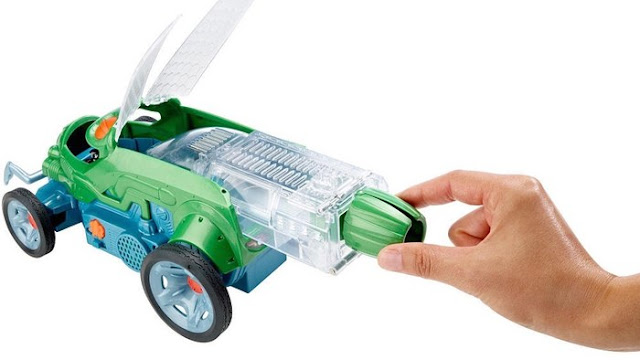Bug Racer is steered by an oblivious live cricket
It's not often that you hear the words "Cricket not included" used in reference to a toy car, but there's a first time for everything. That said, if you are able to supply your own cricket, it can now be used to steer Mattel's new Bug Racer. Presumably other similar-sized insects would work, too … just don't expect any of them to have great driving skills.
The Bug Racer contains a removable clear plastic "cricket habitat," which is taken out when the car isn't in use. That module has air holes, space for food (bits of chopped fruit and veggies), and a hinged top that can be opened for cleaning. It's still pretty small, though, so hopefully users will utilize the included collection device to transfer the cricket back and forth between a larger home.
When it's time to motor, a sliding door in the habitat is temporarily pulled open, allowing the cricket to wander into the front "control room" section. Once the habitat is placed in the car and the power is turned on, motion sensors in the front of the vehicle detect the insect's movements, and steer the car accordingly – if the cricket moves to the left side of the control room, the car turns left, and so on.


Needless to say, the cricket won't have the slightest idea what's going on, so the Bug Racer will really just be moving randomly. With that in mind, it automatically backs up a bit whenever it's stopped by an obstacle. It can also be set to a no-cricket-needed Autodrive mode, in which it just cruises along in a straight line.
While the whole thing might seem more than a little … creepy, it's not unprecedented. Scientists at the University of Tokyo have previously used moths to steer a wheeled robot, while the Fish on Wheels project saw a goldfish steering a tiny car.
The Bug Racer is priced at US$30, requires four AA batteries, and can be seen in action below. Most pet shops sell crickets as food for reptiles.
Categories: news











0 comments:
Post a Comment